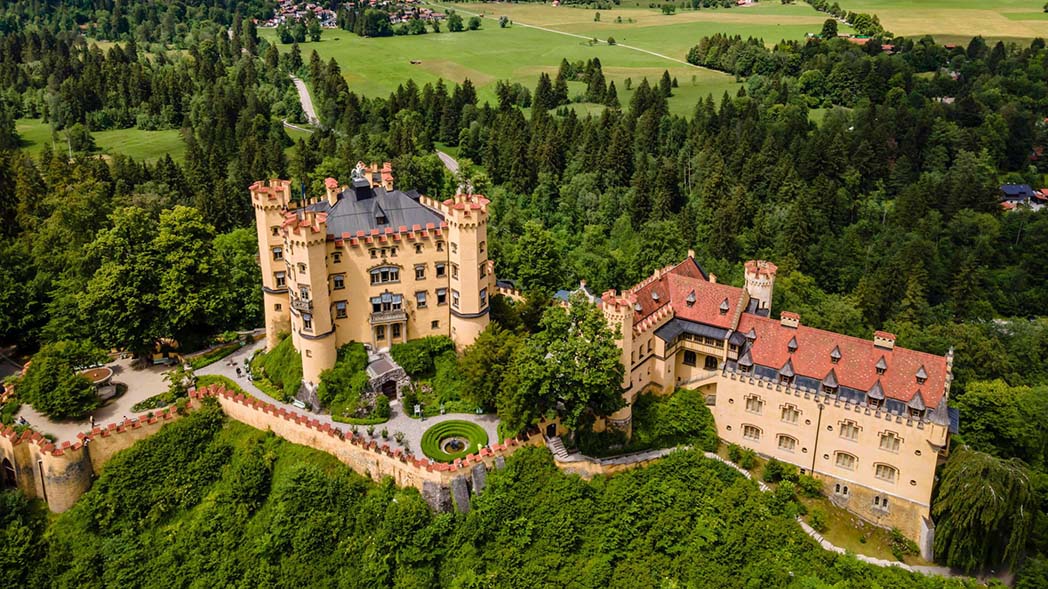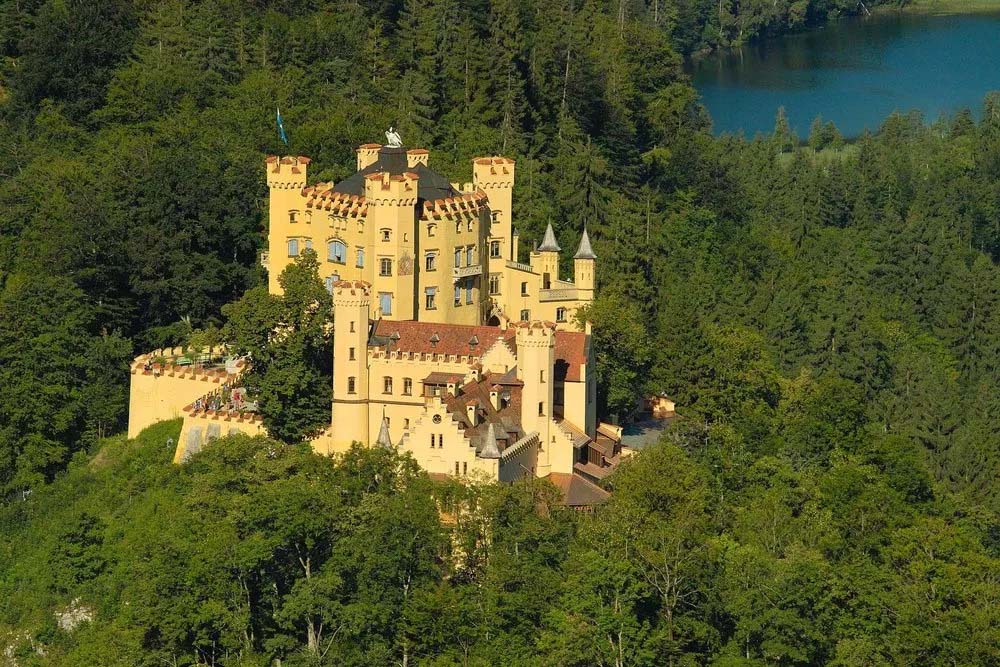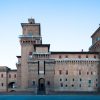Hohenschwangau Castle
Hohenschwangau Castle, nestled in the scenic Bavarian Alps, stands as a remarkable example of 19th-century Romantic architecture. This majestic castle, often overshadowed by its more famous neighbor, Neuschwanstein Castle, offers a unique glimpse. The castle presents a rich history and royal heritage. It has captivated visitors for centuries. It offers picturesque settings, fascinating history, and architectural beauty. As you explore its past and present, you will gain a deeper appreciation for this historical gem.
Location of Hohenschwangau Castle
Hohenschwangau Castle is located in the village of Hohenschwangau, near the town of Füssen. It is situated in Bavaria, Germany. Positioned atop a hill, it overlooks the serene Alpsee and Schwansee lakes. The castle offers breathtaking views of the surrounding mountains and valleys. This idyllic location is a few kilometers from the Austrian border. It has made the castle a popular destination for travelers. Visitors seeking to explore the natural beauty of the Bavarian Alps are frequent guests.
The castle is easily accessible by car. Public transportation services are also available, with regular buses and trains. These connect it to Munich and other major cities. The region itself is renowned for its charming landscapes. Its proximity to other cultural landmarks also adds to its appeal. This makes Hohenschwangau an ideal starting point for those looking to explore. Bavaria’s rich history and scenic wonders lie within reach.

History of Hohenschwangau Castle
Hohenschwangau Castle’s history traces back to the 12th century when the noble knights of Schwangau originally built it. Known then as Schwanstein Castle, it served as a fortress for various local rulers. However, the original structure fell into disrepair during the early 16th century. It was left in ruins for many years. By the early 19th century, the castle’s romantic location had attracted the attention of Crown Prince Maximilian of Bavaria. He later became King Maximilian II. He envisioned restoring it as a summer residence for the royal family.
The restoration work began in 1832 under the direction of architect Domenico Quaglio. The castle’s transformation aligned with the Romantic spirit of the time. It became a neo-Gothic masterpiece with turreted towers and ornate facades. The renovation team completed the project in 1837, added elaborately decorated interiors, and renamed the castle Hohenschwangau. This translates to “High Swan District.” The name pays homage to the swan, a symbol of chivalry and romance. This held special significance for the Bavarian royal family.
Throughout the 19th century, Hohenschwangau Castle served as a beloved retreat. It was a retreat for the Bavarian royal family. King Ludwig II, the son of King Maximilian II, spent much of his childhood there. He developed a lifelong fascination with fairy tales, legends, and the Romantic aesthetic. This fascination would later inspire him to build the nearby Neuschwanstein Castle. Many often regard it as the epitome of Romantic architecture. Hohenschwangau also hosted several prominent guests during this period. Its beauty attracted composers, artists, and other members of European nobility.

Current status
Today, Hohenschwangau Castle stands as one of Bavaria’s most visited historical sites. It attracts thousands of tourists each year. The Bavarian Palace Department meticulously preserves and maintains the castle, reflecting its original 19th-century splendor. Visitors can explore the castle’s lavish interiors, which include ornately decorated rooms. Frescoes depict scenes from Germanic mythology and medieval legends.
Guided tours are offered daily. These provide insight into the castle’s history, architecture, and the lives of its former royal residents. The tour includes a visit to the king’s and queen’s apartments. The Hall of Heroes is also featured. This includes an impressive collection of armor and weaponry. Many of the castle’s original furnishings have been preserved. These allow visitors to experience the opulence of Bavaria’s royal heritage.
In addition to its historical significance, Hohenschwangau Castle remains an important cultural landmark. The castle frequently hosts concerts, exhibitions, and other cultural events. These celebrate Bavarian art and history. The surrounding gardens and walking paths provide a tranquil setting. Leisurely strolls offer panoramic views of the Alps and the nearby lakes.
The castle’s enduring charm lies in its ability to transport visitors to a bygone era. The castle brings Romantic ideals and royal grandeur to life. With its rich history, stunning location, and well-preserved architecture, Hohenschwangau Castle continues to captivate the imaginations of all who visit.
Admission
Community features
Castle features
Video
Location
Official website
Featured listings














